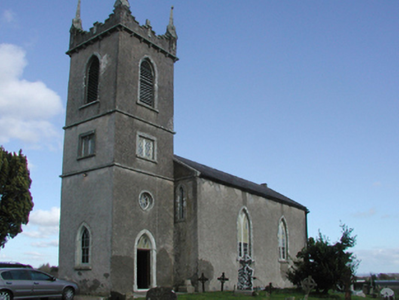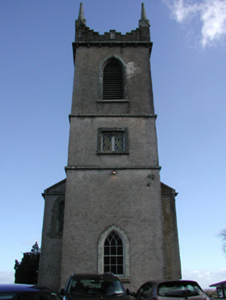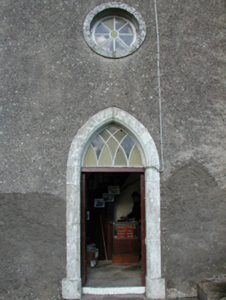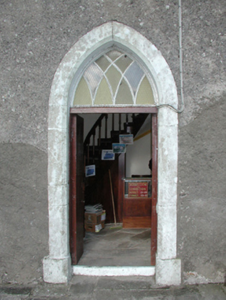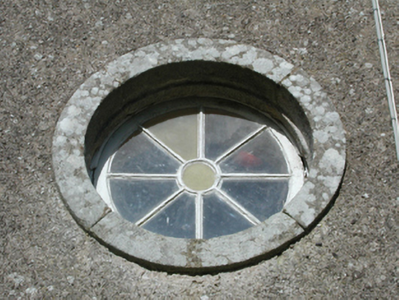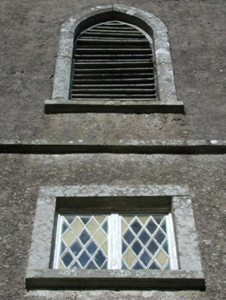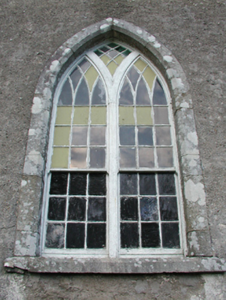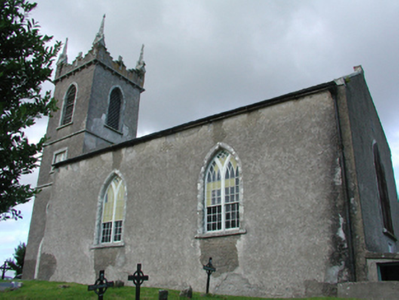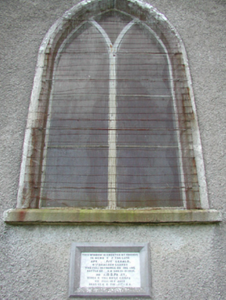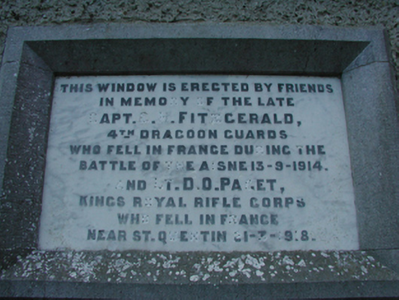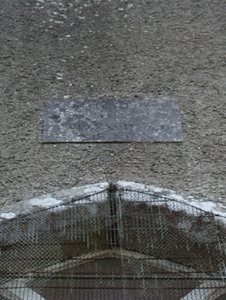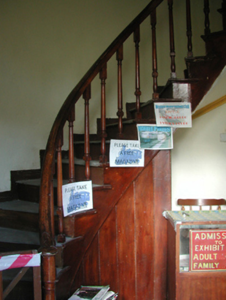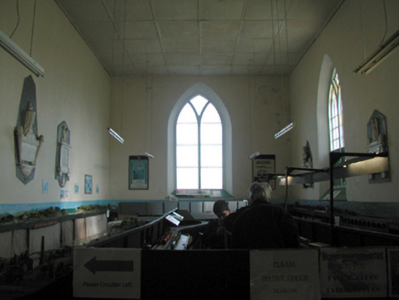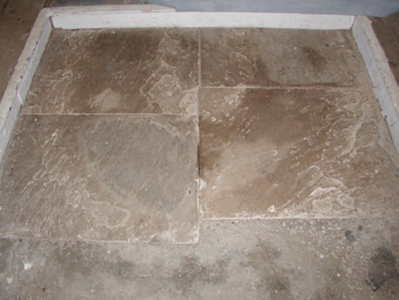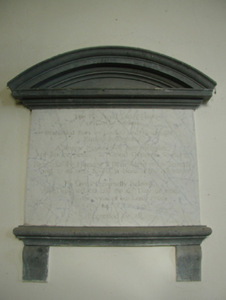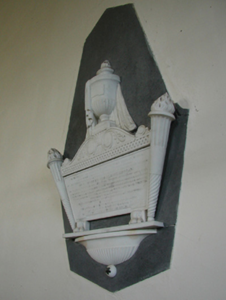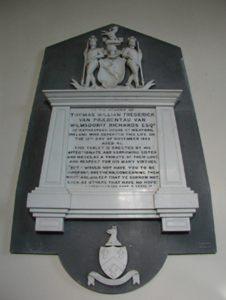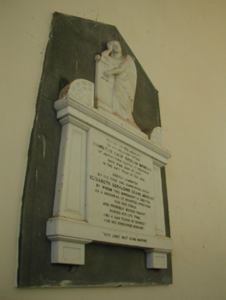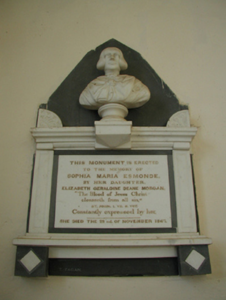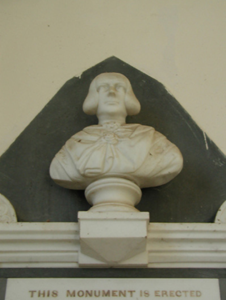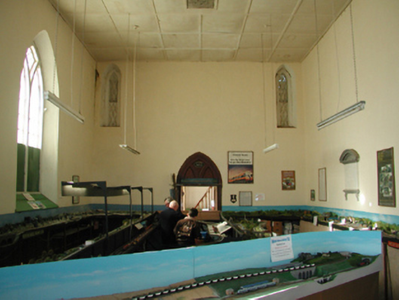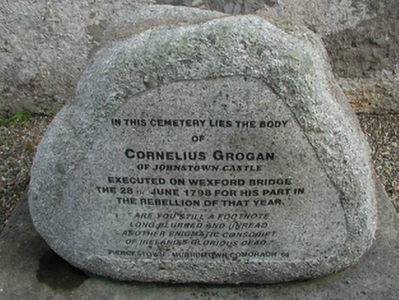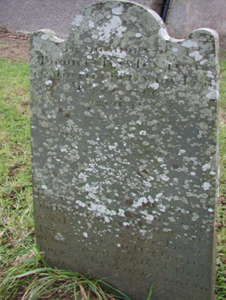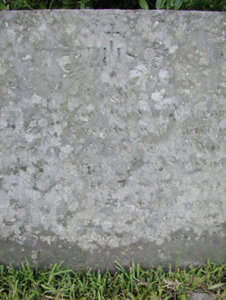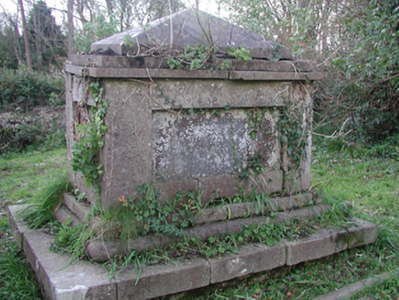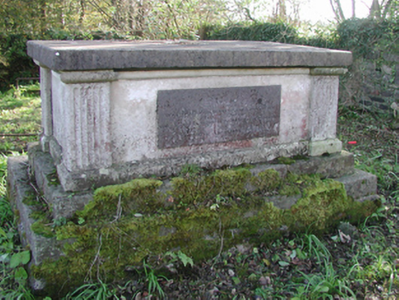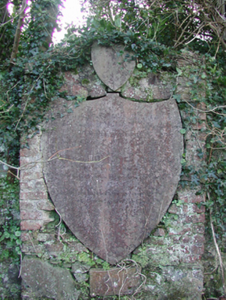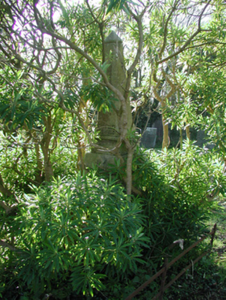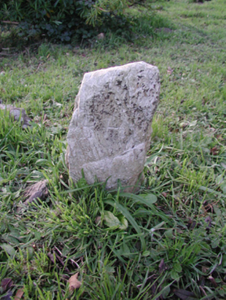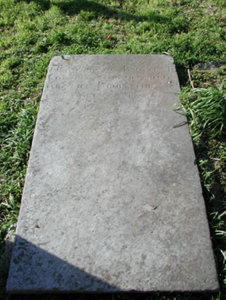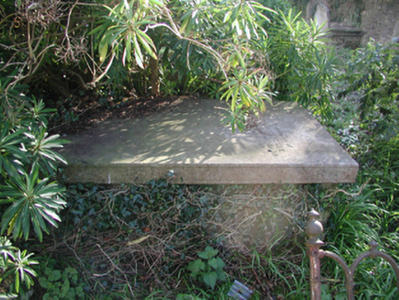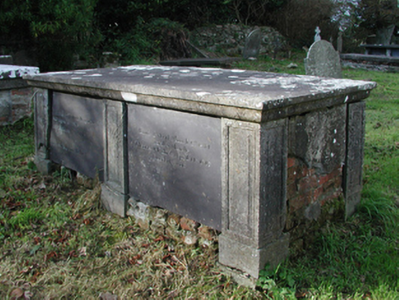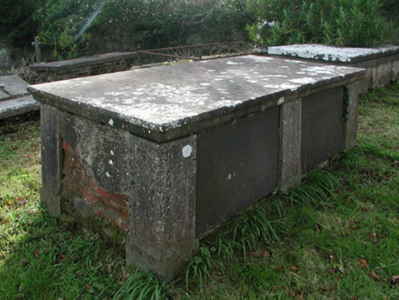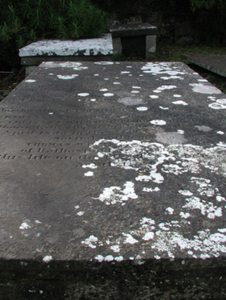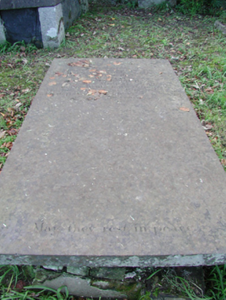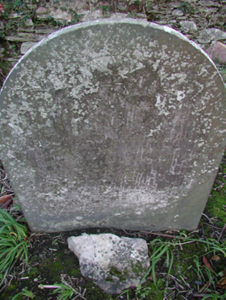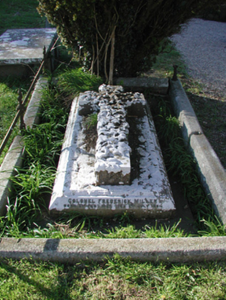Survey Data
Reg No
15704223
Rating
Regional
Categories of Special Interest
Architectural, Artistic, Historical, Scientific, Social
Original Use
Church/chapel
In Use As
Museum/gallery
Date
1820 - 1825
Coordinates
302528, 117630
Date Recorded
02/11/2008
Date Updated
--/--/--
Description
Detached two-bay double-height single-cell Board of First Fruits Church of Ireland church, dated 1823; designed 1824; built 1824, on a rectangular plan with single-bay three-stage tower to entrance (west) front on a square plan. Renovated, 1865, with interior "improved". Repaired, 1967. Closed, 1971. Adapted to alternative use, 1984. Pitched slate roof with lichen-covered clay ridge tiles, cut-granite coping to gables, and cast-iron rainwater goods on cut-granite eaves retaining cast-iron hoppers and downpipes. Roughcast battered walls; roughcast surface finish to tower with cut-granite stringcourses including cut-granite stringcourse (bell stage) on cut-granite double beaded consoles supporting diagonal obelisk pinnacles centred on "arrow loop"-detailed crow stepped battlemented parapets having cut-granite coping. Pointed-arch window openings with cut-granite sills, timber Y-mullions, and cut-granite surrounds having chamfered reveals framing nine-over-nine timber sash windows having interlocking Y-tracery glazing bars. Pointed-arch window opening to chancel (east) below cut-limestone date stone ("1823") with cut-granite chamfered sill, timber Y-mullion, and cut-granite surround having chamfered reveals framing iron mesh storm panel over fixed-pane fittings. Lancet window openings to entrance (west) front with cut-granite surrounds framing one-over-one timber sash windows having cast-iron lattice glazing bars. Pointed-arch window opening to tower (first stage) with cut-granite chamfered sill, and cut-granite surround having chamfered reveals framing three-over-six timber sash window having interlocking Y-tracery glazing bars. Square-headed window openings (second stage) with cut-granite sills, and cut-granite surrounds framing timber casement windows having cast-iron lattice glazing bars. Pointed-arch openings (bell stage) with cut-granite sills, and cut-granite surrounds having chamfered reveals framing louvered timber fittings. Interior including vestibule (west) on a circular plan retaining timber boarded spiral staircase with turned timber "spindle" balusters supporting carved timber banister terminating in turned timber newel; pointed-arch door opening into nave with timber panelled double doors having overpanel; full-height interior with stone flagged central aisle between raised timber boarded floors; timber panelled wainscoting with dado rail not visible, cut-white marble Classical-style wall monuments (ob. 1760; 1867), and stepped dais to chancel (east) with turned timber balusters supporting carved timber communion railing centred on "East Window". Set in landscaped grounds on an elevated site with roughcast cylindrical piers to perimeter having rendered conical capping supporting crocketed wrought iron double gates.
Appraisal
A church erected with financial support (1823) from the Board of First Fruits (fl. 1711-1833) representing an important component of the early nineteenth-century ecclesiastical heritage of County Wexford with the architectural value of the composition, one attributed (1824) to the little known John Meason of Wexford (RCB), confirmed by such attributes as the standardised nave-with-entrance tower plan form, aligned along a liturgically-correct axis; the "pointed" profile of the openings underpinning a contemporary Georgian Gothic theme with the chancel defined by a restrained "East Window"; and the obelisk-topped battlements embellishing the tower as a picturesque eye-catcher in the landscape. Having been reasonably well maintained, the elementary form and massing survive intact together with substantial quantities of the original fabric, both to the exterior and to the deconsecrated interior where contemporary joinery; and wall monuments signed by Thomas Kirk RHA (1781-1845) of Dublin and Thomas Fagan (d. 1894) of Sallystown, all highlight the considerable artistic potential of a church making a pleasing visual statement in a rural street scene.

